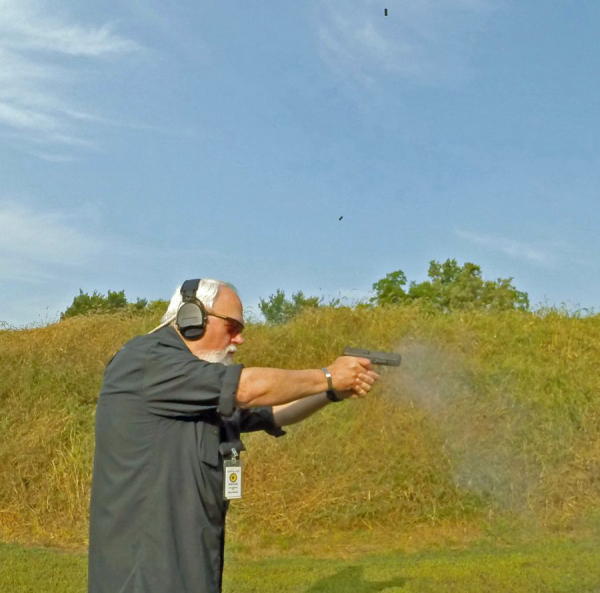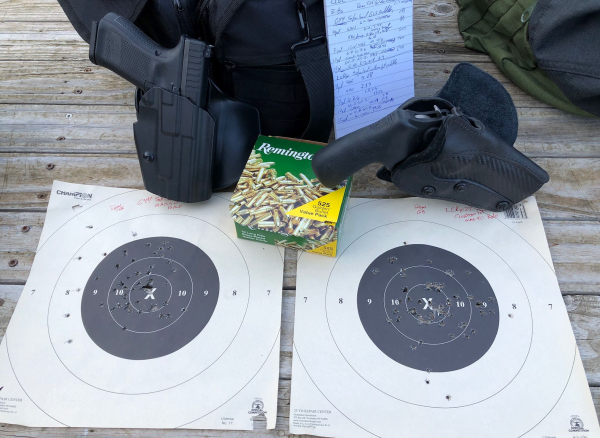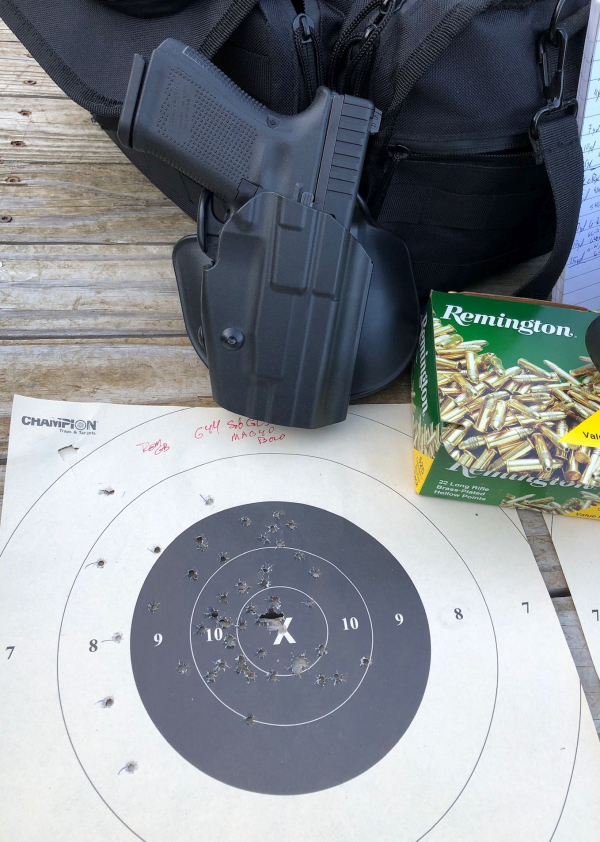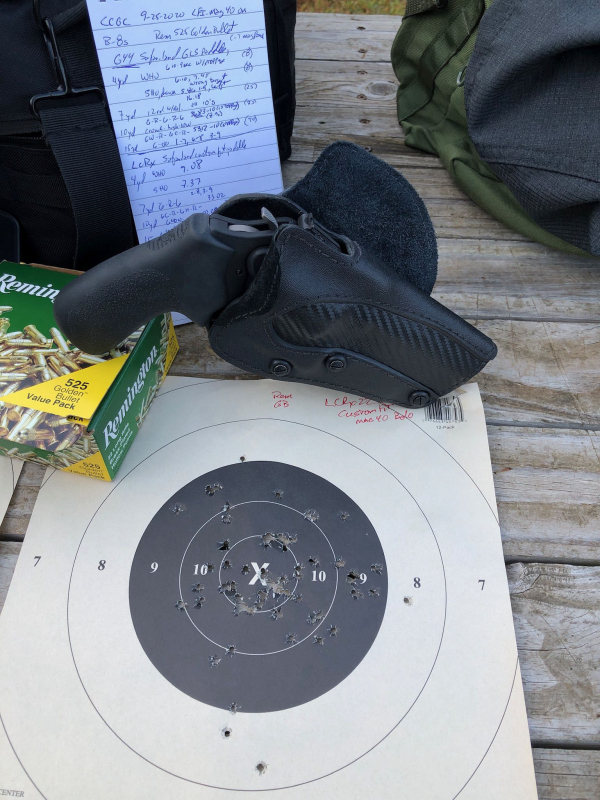
Having written recently about the books of Massad Ayoob, I considered using his qualification course, devised in the days of Lethal Force Institute and continued into the current Massad Ayoob Group era, for practice. As centerfire ammo is all but impossible to get, I was defaulting to 22 LR.
But using a 22 on a centerfire qualification course is ‘cheating.’ Over the years, the targets he’s used in classes include the NRA B-27 silhouette in “qualification mode” (“8” ring and in = 5 points, “7” ring = 4, a hit anywhere else on the silhouette = 3), as well as the USPSA and IDPA targets, scored similarly.
As I wasn’t dealing with ‘service pistol’ recoil, I elected to use the NRA B-8 bullseye repair center. I considered scoring it with “9” ring and in as 5, “8” ring (the size of the -0 on the IDPA target) as four and a hit anywhere else on the repair center sheet as one … but it didn’t come down to that.
The course is known as a ‘police’ style qual of the old school with the addition of working various stances at the most distant stage. Up close, four yards – the length of a Ford Fiesta – there are two strings, timed separately. The first is ‘nondominant’ hand only, starting at a low ready (not on the target), six rounds in eight seconds. This is followed by another six rounds in eight seconds, dominant hand only. As I recalled it, it was from the holster, but you started with your hand on the gun – as if you’d been alerted to some trouble, but not enough to have the gun in hand.
At seven yards, it’s the old NRA-style 12 rounds in 25 seconds with an empty reload after the first six. This is followed by the fifteen yard stage. A real qualification ‘macarena,’ this one begins with a draw to six hits from a ‘low cover crouch,’ as if hunkering down behind an automobile, for example. After an empty reload, six more are fired from high kneeling, leading to another empty reload. We finish with the final six fired from low kneeling. This is done, ideally, in 75 seconds. – Yes, modern electronic timers do measure that long. Even longer, as I found out.
At fifteen yards, we draw to six hits fired from Weaver, followed by six fired from the Chapman variant of Weaver (think of your gun arm bicep as the rifle stock you’re cheeking) and finally with six hits from isosceles. There is, as you may have surmised, an empty reload after each sixth shot.

Now I can report I had some stoppages with the Glock 44 – the first since I got it. When you’re trying to accomplish a task – strings of fire with reloads – you can generate stoppages by obstructing the slide’s travel only slightly. This is especially true with rimfire ammo of widely varying power levels.

I also learned that reloading a 22 revolver from loose ammo with elderly numb fingers is an exercise in futility. I could have used a sun dial to keep the time.
That said, the accuracy didn’t suck. It does take longer to the first hit from the buzzer on the less generous target. I clearly didn’t run the 22 any faster than centerfire handguns which surprised me. I did get some serious practice in – clearing stoppages, drawing to a first hit and reloads.

Oh, and the Stressfire Reload for revolvers that Mas teaches is really the right one to use … trust me on this. As I got further back, I found my revolver times were much improved.
The support gear? A Safariland GLS Paddle holster for the G44 and the same company’s Custom Fit paddle for the LCRx. A Comp-Tac magazine pouch and a PACT Club timer rounded out the gear selection. After I shot the qual, I settled into the LAV “command” drill: aimed in on a two-inch tape at four yards, finger on trigger. The timer is set to random start. When you first hear the tone, cut it in half with the gunshot.
This is pressing off the hit without moving the gun - on the signal. With the revolver my best time was .18 second, the slowest was .23 second. The average was .22 second. Using the GLOCK 44, the fastest time was .16, the slowest .23. The auto’s average was .20 second.
I finished off with shooting the target trademarks and bar codes at the same distance, shooting one-handed. Half were fired with the left hand, the other half with the right.
All in all, a good practice session at low cost with some lessons learned.
-- Rich Grassi